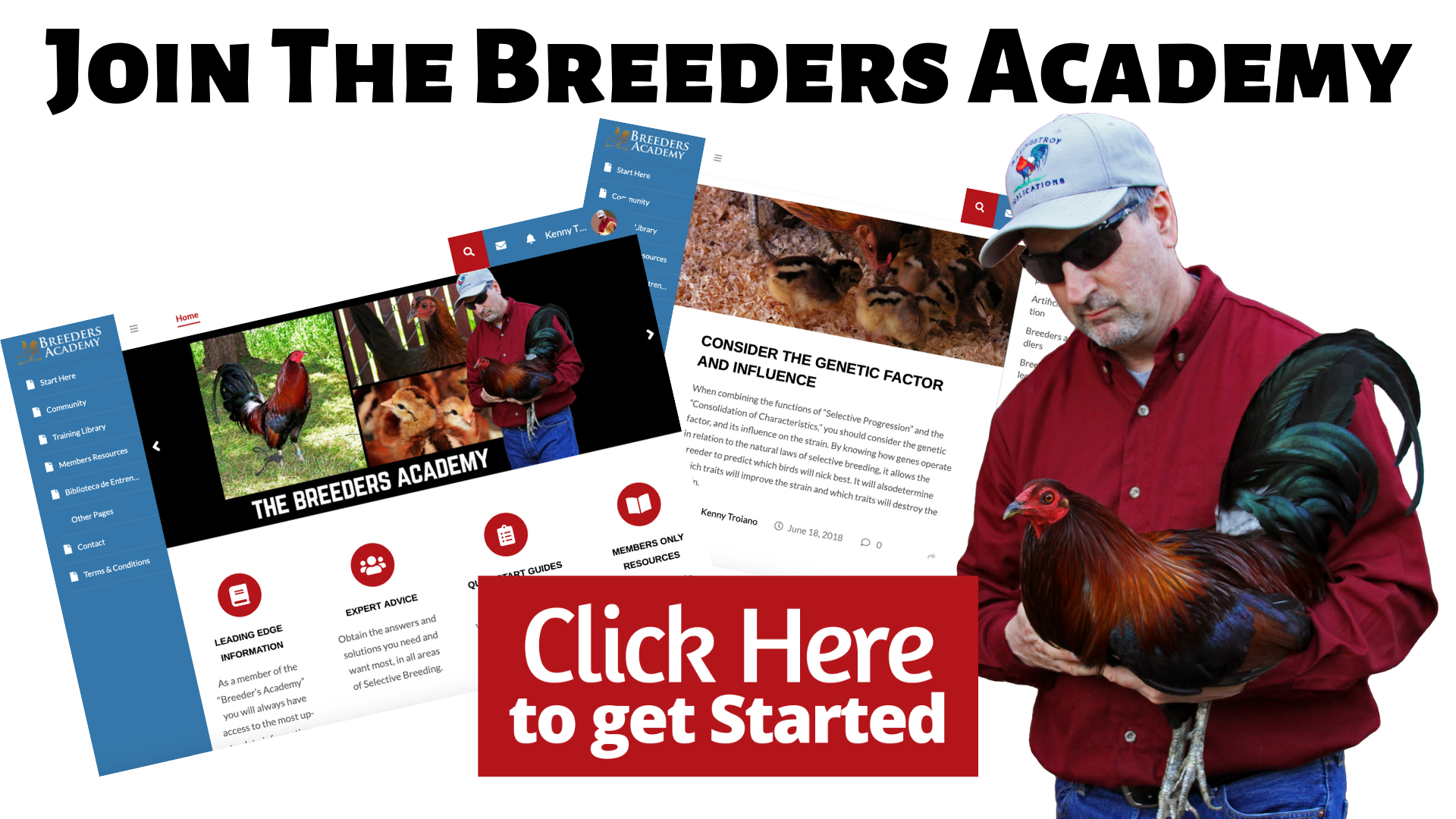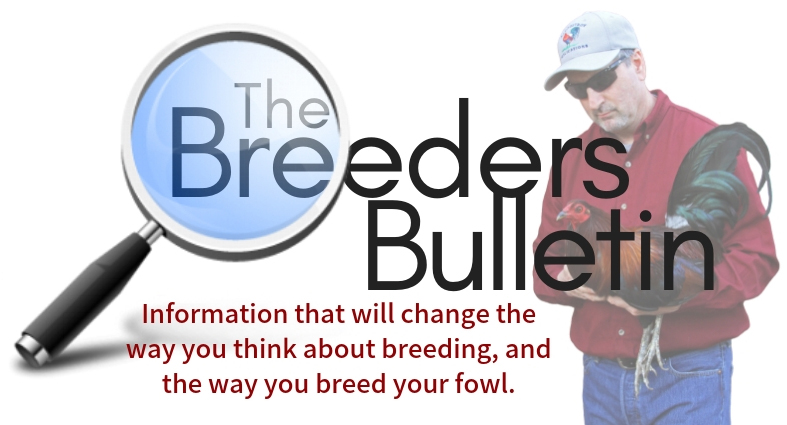Progress is made by selecting one trait, not from the selection of multiple traits
By Kenny Troiano
Copyright©2020 by Kenny Troiano/Maximus Troy Publications
When selecting brood fowl, seldom does a breeder focus his attention on a single trait. Instead, most breeders will select brood fowl that have a multitude of desirable traits, and attempt to capitalize on all of them simultaneously. Not only is this a mistake, but it is caused by three major deficiencies:
- Not having a definiteness of purpose or goal that leads to haphazard breeding habits
- Not having practical breeding plans for purifying and improving the quality of the strain
- And a lack of patience and persistence that the plan will work
As you can see, there is no dedication towards a standard, or a set of goals for the successful improvement of the strain. Breeders, such as these are trying to obtain all the desirable traits in the minimum number of matings. They know what traits are needed to win, but they don’t know how to acquire these traits in their own fowl. Most resort to infusing outside blood or to crossbreeding. There are times when this will be necessary, but in most cases the family will carry, within their ancestral line, all or most of the genetic inheritance they need.
Special note of interest: when I use the term “standard,” what I mean is the “personal standard” that you set for yourself and your fowl. Not one set by a club or organization. They must represent their breed and variety, but be unique as a strain.
This is not an impossible goal to achieve, but it can be extremely difficult if you are not willing to be patient and persistent. Creating a great family of fowl, or improving an existing family, takes time. In most cases it can take years. It also requires a lot of patience. The improvement of a family happens very slowly, through small changes, and from the accumulation of occasional and unexpected genetic variations.
Starting with a well-bred bloodline is best: Although it is possible to start with hybrid crosses or mongrel flocks (we teach you how in the Breeders Academy), it will take a considerable amount of time to make significant progress. It is best to start with a family of fowl that has the capacity to improve. This comes from a well-bred bloodline. Select a family that presently expresses the traits that you desire, and carry on a breeding program that will continue to improve their overall form and function.
Special Note of Interest: The above paragraph is the ideal, but if truth be told, getting a well-bred bloodline is nearly impossible from most. This is why I created the Breeders Academy. I can you how to create a true strain by selecting or purchasing the right Seed Fowl. I will teach you, not only how to select the right Seed Fowl, but to turn them into a true family strain. There is a specific process to follow, a breeding program that I call the “Founders Program.”
Progress is made from selecting one trait at a time: Progress is not made from the selection of multiple traits, but from the selection of one trait at a time. To make significant improvement in your family or strain, select for a single trait. If the trait is dominant, variations of the trait should be expressed in a majority of the F1offspring, the first-generation offspring or progeny.
The progeny that do not show the traits you are looking for should be culled. This ensures the continuation of the desirable trait in the following generations. Once the trait is secured within the family, in other words, it is prominent and express by a majority of the offspring throughout the family, you can then select another trait to perpetuate.
Symmetry in breeding is a balancing act: The problem with selecting for multiple traits, all at once, is that some traits will not be expressed due to dominant and recessive characters. Other traits may be eliminated, where the improvement of one trait may mean a setback or elimination of some of the others. And still, others may be linked to other unwanted traits, which can present new problems.
Maybe even more a factor is the effects of polygenic traits. These are traits that are determined by multiple genes. The problem here is that many breeders find themselves on the wrong side of the quantitated scale and never understand why. They miss the one genetic factor that could change their results substantially.
Many traits are tightly correlated characters, where the perpetuation of one trait carries with it another wanted or unwanted trait. Problems such as these will only slow down your progress, and at times will bring progress to a complete halt. In other words, improvement in specific traits can be extremely slow, and improvement of other traits may be barely noticeable or nonexistent.
Another problem is if you put your attention on a number of traits, you may inadvertently neglect other important existing traits. Keep an eye on their overall form as you select. Improve the desirable trait, while at the same time, maintaining the proper form. They must be unique as a stain, but still represent their breed and variety.
Also, be careful of putting too much attention on a single trait. You do not want to become so blind to the other traits that you inadvertently lose their form. Color of plumage is a good example of this. You could be so focused on the perfection of the plumage color that you inadvertently change the family’s conformation of body. Focus on the overall form and function of the bird, not just the one trait. Remember, it’s all about balance.

